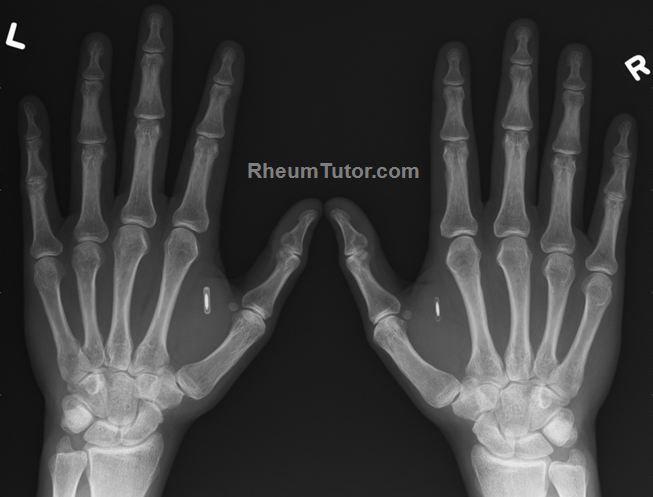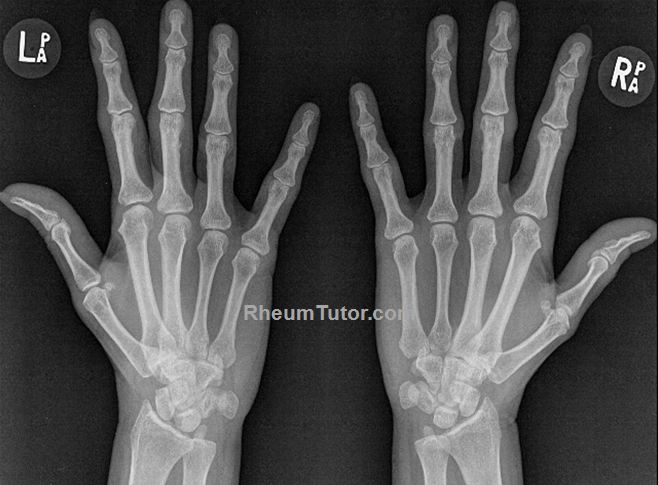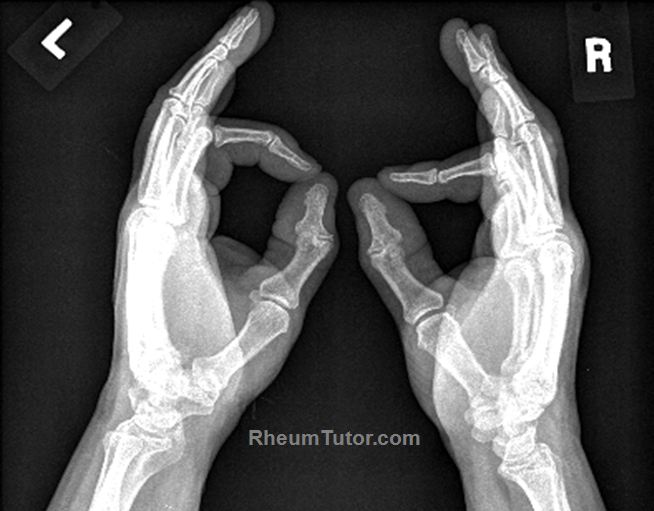X-Ray Interpretation
Hand radiographs are typically done in 3 views. The ABCDs approach to interpretation is described below.
POSTERIOR-ANTERIOR VIEW
- This is the most commonly used view for interpretation.
- Finger deformities may not be noticed as patients are required to press their hands down firmly against the plate, while the X-Rays are shot from above.

BALL-CATCHER’S (NORGAARD’S) VIEW
- Hands are in a “ball-catching” position.
- This is the best view to look for early erosions at the base corners of the proximal phalanges.

LATERAL VIEW
- This view is mainly used for assessment of fractures and is of limited value in rheumatology.

THE ABCDs APPROACH TO INTERPRETING HAND RADIOGRAPHS
It is best to have a systematic approach to reading X-Rays of the hands. The actual order is less important, but one useful strategy is the ABCDs approach.
- Alignment
- Bone
- Mineralization, Periarticular Osteopenia
- New bone formation: osteophytes, syndesmophytes
- Joint spaces
- Erosions
- Fractures
- Cartilage
- Joint spaces
- Calcifications
- Distribution of any changes
- A pattern of joint involvement, symmetry
- Soft Tissues
- Swelling, calcification